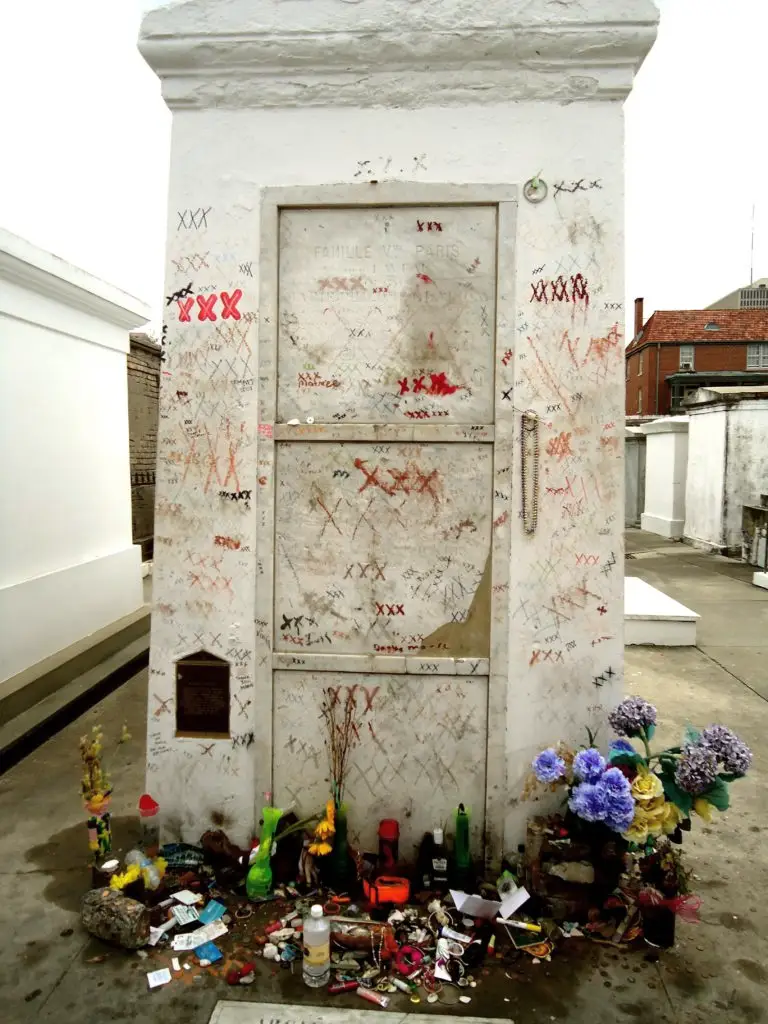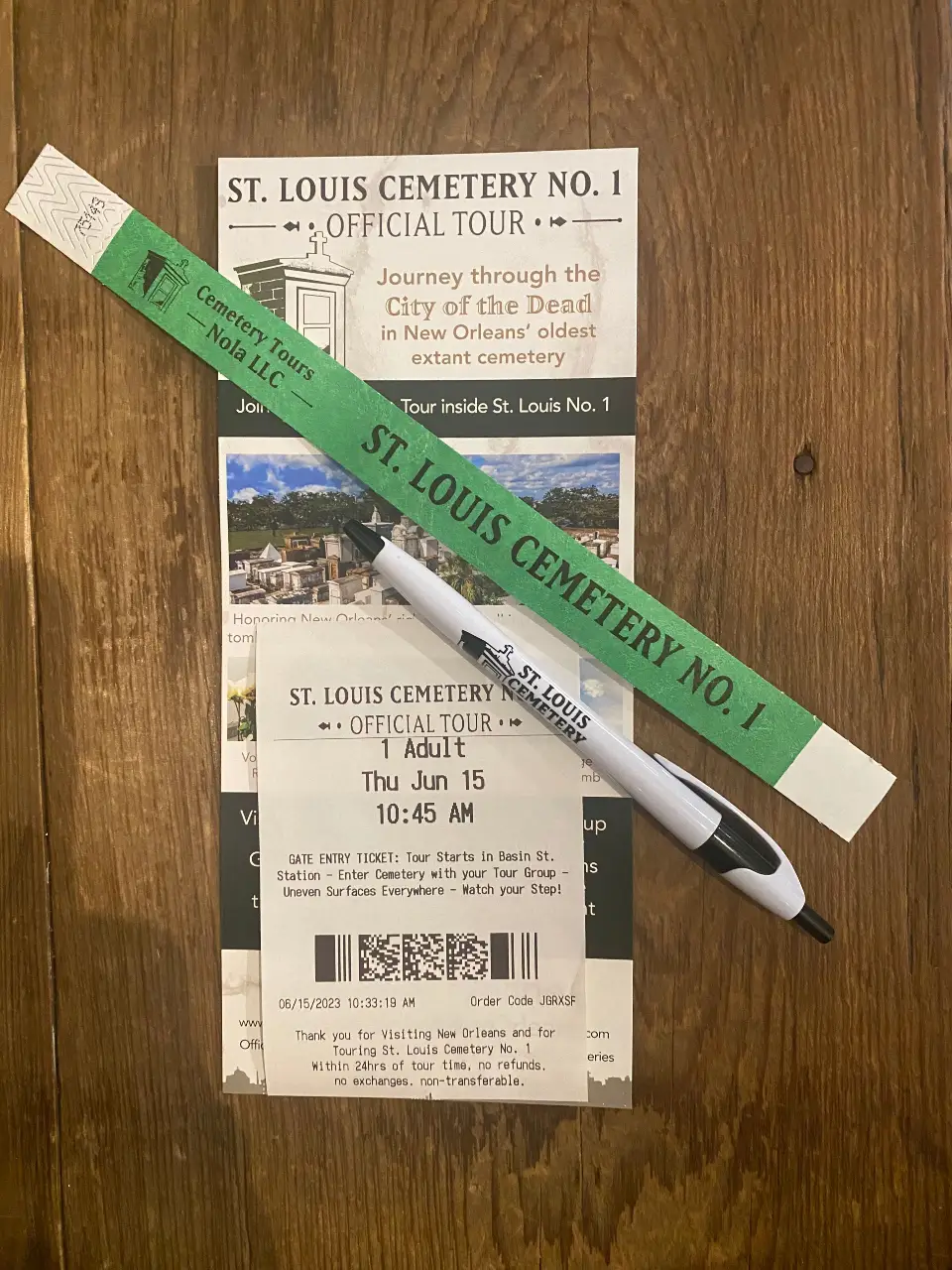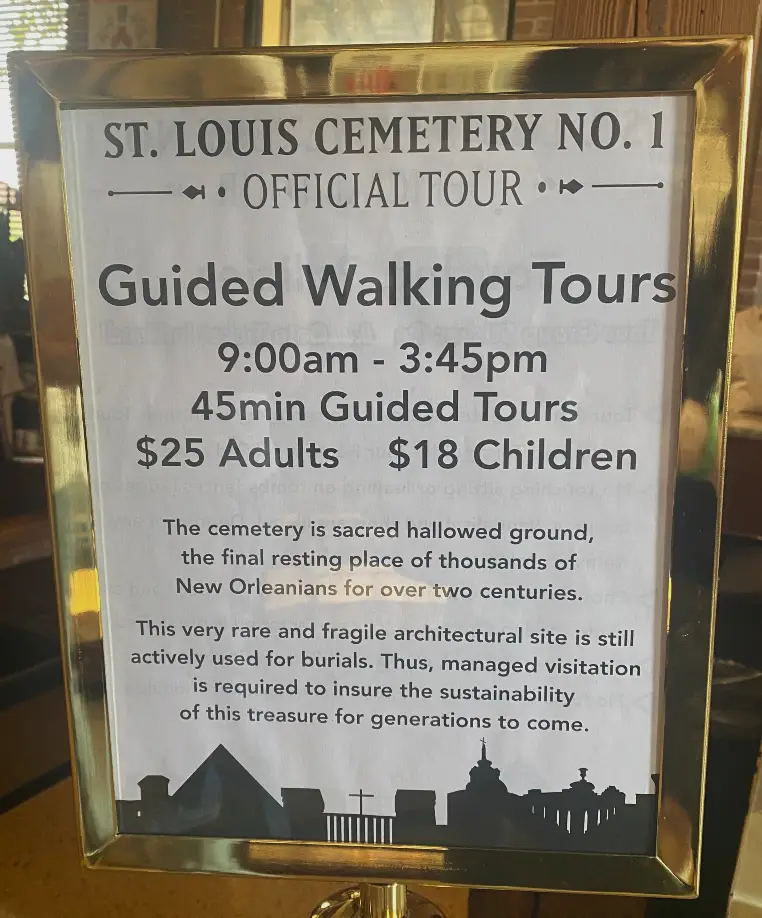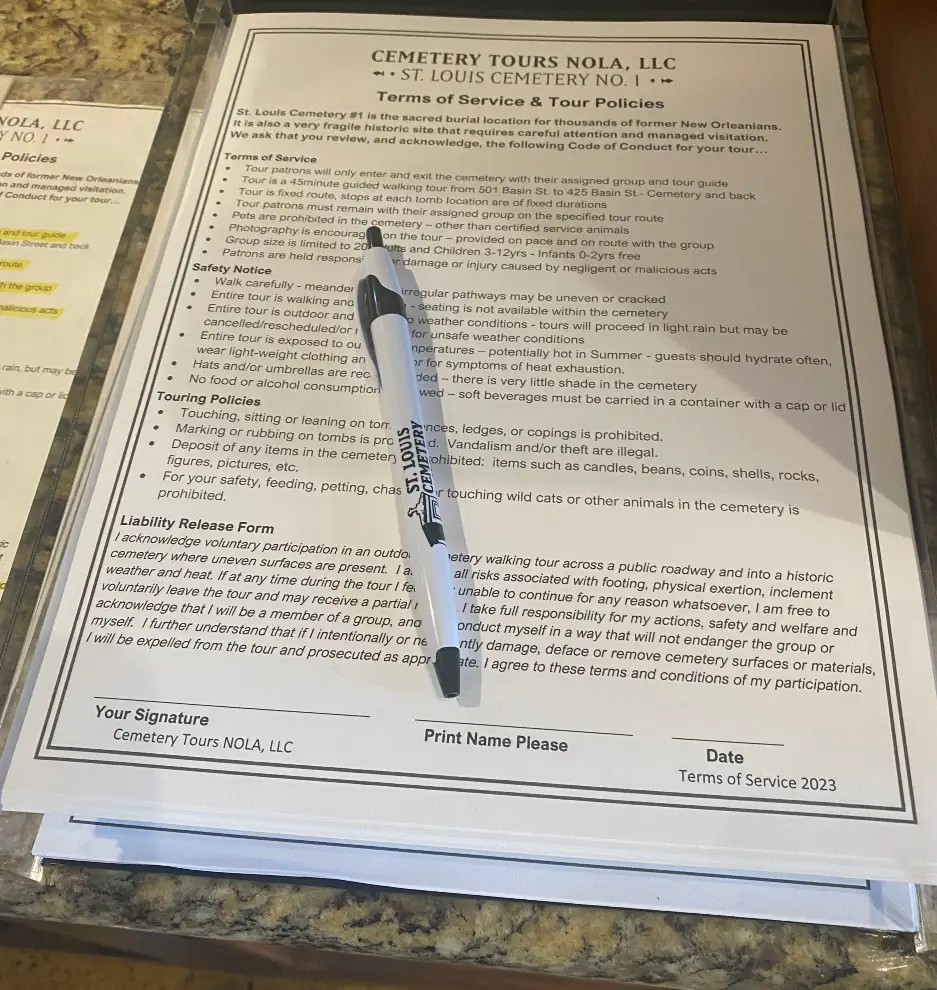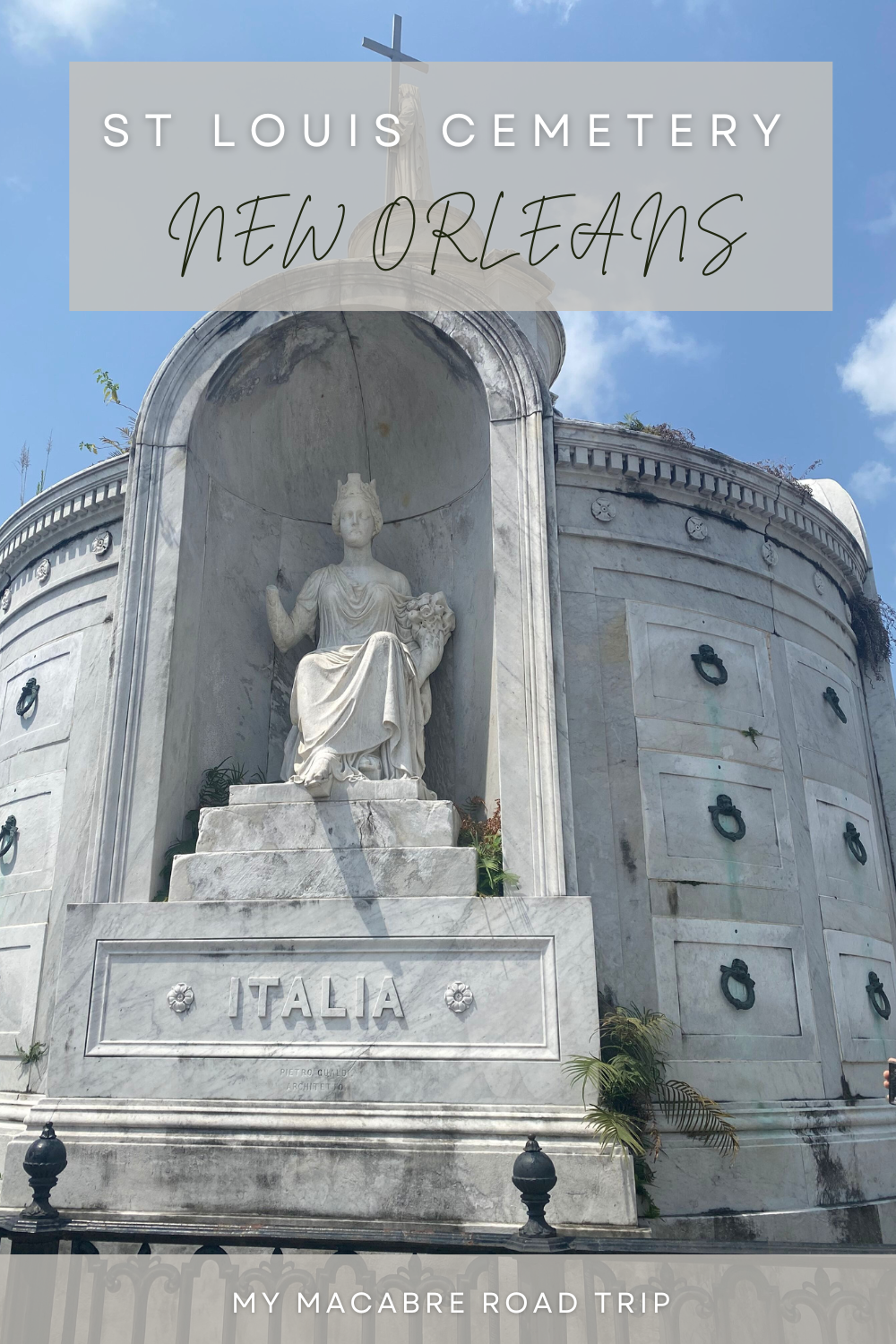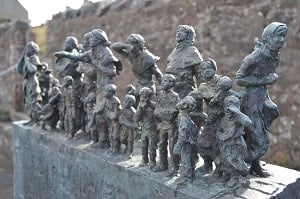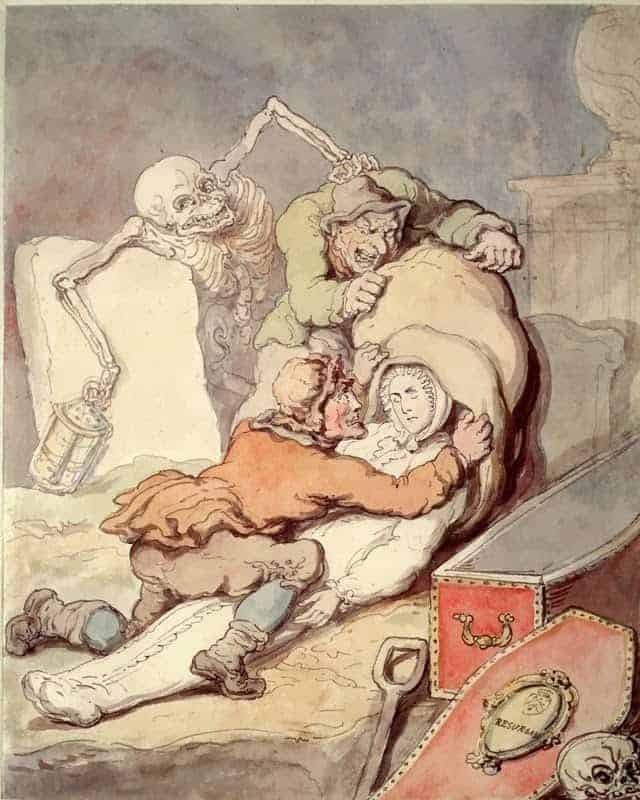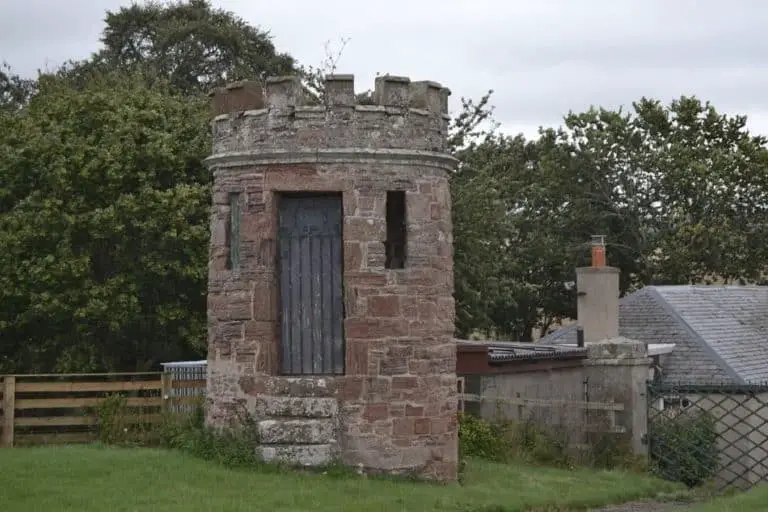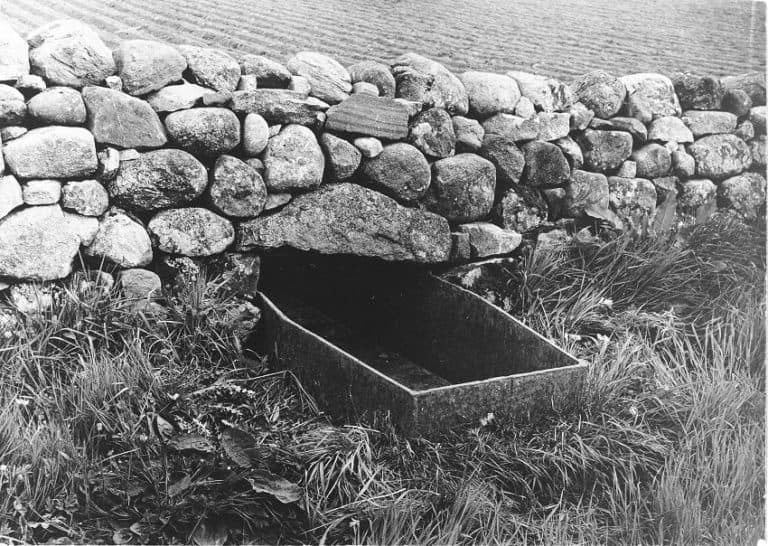St. Louis Cemetery No. 1 | The Famous New Orleans Graveyard
This site uses affiliate links to sites, including Amazon. If you decide to make a purchase through any links, I’ll earn a small commission from the sale at no extra cost to you. Please read my Disclosure Policy for further information.
I was lucky enough to have had a whistle-stop visit to New Orleans, where I finally got the chance to explore a place that’s fascinated me for years — the legendary St. Louis Cemetery No. 1.
Often described as the most iconic cemetery in New Orleans, it’s not only steeped in quirky charm and history, but its stories have helped shape the city’s identity — from its unique burial practices to its most well-known ‘residents’.
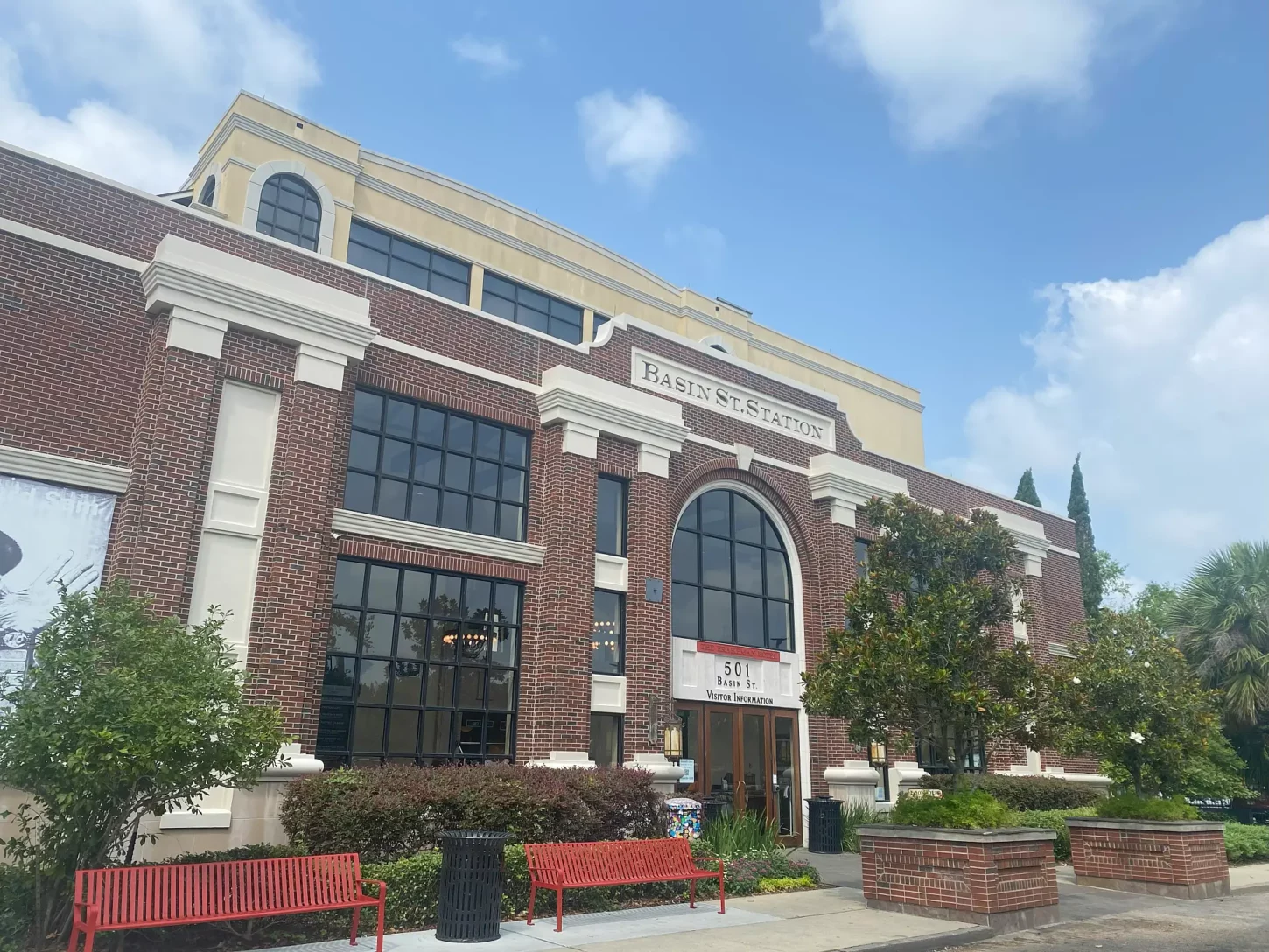
But St. Louis Cemetery No. 1 isn’t just any New Orleans graveyard.
It’s the oldest surviving cemetery still in use in the city, and the final resting place of some of the city’s most notable figures — including the mysterious Voodoo Queen, Marie Laveau, whose tomb continues to draw visitors with offerings and hopeful requests.
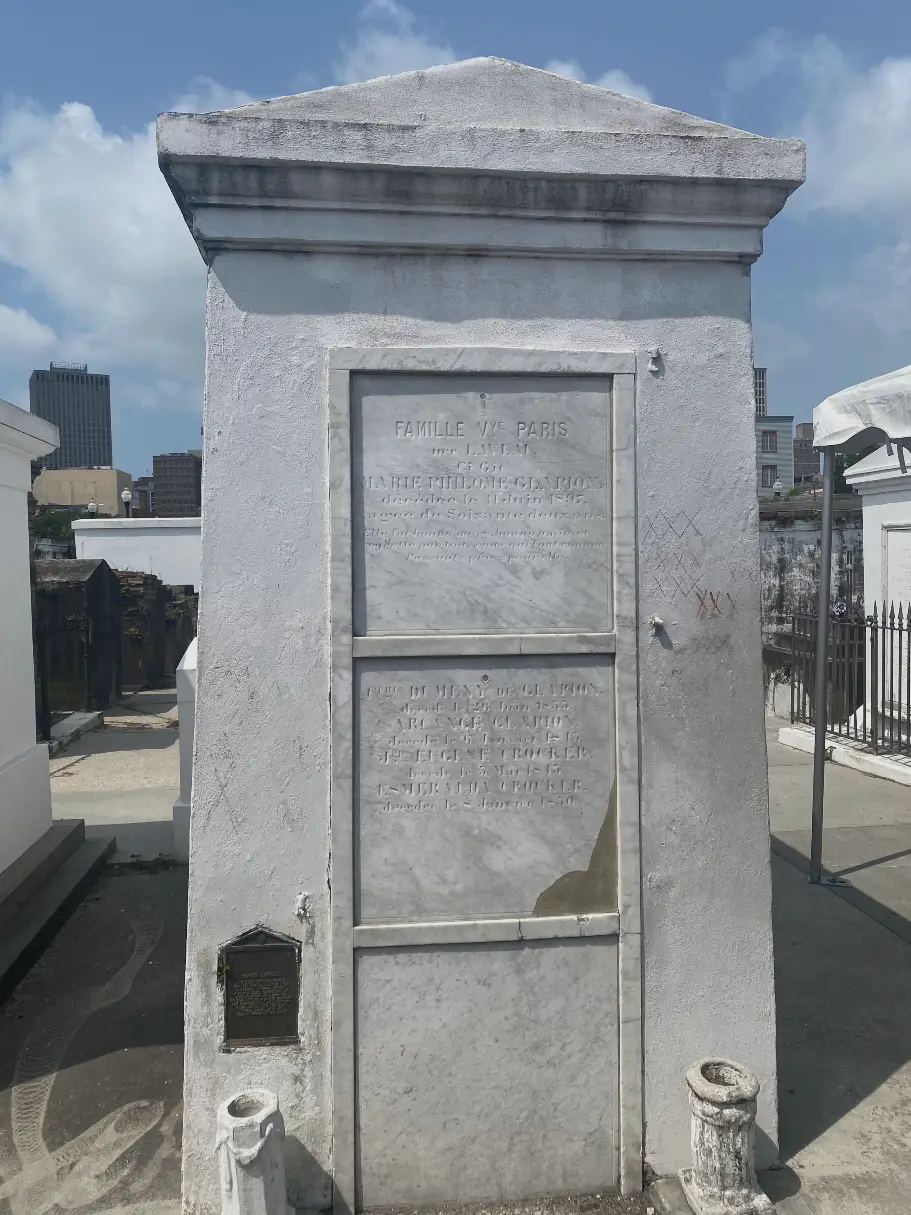
After years of anticipation, I was genuinely thrilled to finally be able to tick this one off my bucket list.
Access is via official tour only, so I booked the St. Louis Cemetery No. 1 Walking Tour with NOLA — on what turned out to be one of the hottest days of the year, naturally. (You can also book via Get Your Guide or Viator if you prefer.)
Although I was only in New Orleans for the briefest of visits, I can honestly say that this famous graveyard didn’t disappoint.
But does it live up to the hype?
Table of Contents
- A Brief Note on New Orleans’ First Cemetery
- Why Are the Dead Buried Above Ground in New Orleans?
- St. Louis Cemetery No. 1 and Its Flooding History
- Who’s Buried in St. Louis Cemetery No. 1?
- Famous Graves In St. Louis New Orleans
- Marie Laveau – The Voodoo Queen
- Bernard de Marigny – The Gambler with a Legacy
- Paul Morphy – Chess Prodigy Turned Tragedy
- Italian Mutual Benevolent Society Tomb
- Nicholas Cage’s Pyramid Tomb
- Delphine LaLaurie – Fact or Folklore?
- Visiting St. Louis Cemetery No. 1
- Book Recommendations
- Keep This Post Handy on Pinterest
A Brief Note on New Orleans’ First Cemetery
St. Louis Cemetery No. 1 might be the most famous cemetery in New Orleans, but it wasn’t the first.
That honour belongs to the now-lost St. Peter Street Cemetery — New Orleans’ original burial ground, tucked into the French Quarter and quietly erased from view.

St Peter Street Cemetery, New Orleans
St. Peter Street Cemetery closed in the late 18th century due to severe overcrowding and rising fears about the spread of disease. In use from 1725 until the 1780s, it has long since vanished from view — paved over and largely forgotten, with the original coffins still buried deep beneath the ground.
Image: Gonichon map of St Peter Street Cemetery New Orleans in 1731 via neworleanshistorical.org and The Historic New Orleans Collection
That said, St. Louis Cemetery still holds a few distinctions of its own.
In 1975, St. Louis Cemetery No. 1 was formally recognised for its historical significance and added to the National Register of Historic Places, alongside Lafayette Cemetery No. 1.
Why Are the Dead Buried Above Ground in New Orleans?
When St. Louis Cemetery No. 1 was first consecrated in August 1789, it wasn’t exactly built on ideal terrain.
The land — low-lying, marshy, and prone to flooding — posed obvious problems for the dead, not to mention the living. Traditional ‘6ft below ground’ burials were attempted, but the city’s high water table quickly made itself known.

Early graves were dug vertically — coffins placed on end to save space and avoid the worst of the groundwater.
Later attempts to keep the coffins submerged included weighing coffins down, boring drainage holes into the sides, and even adding sand or crushed shells to the site to absorb excess moisture.
Nothing worked particularly well. As The Scotsman put it in 1993, underground burial was eventually abandoned altogether in the city — “Every time it rained, the ground flooded, and coffins popped back onto the surface.”
It sounds like something from a horror story but it’s historically accurate — and not limited to one cemetery in New Orleans either. Lafayette Cemetery No. 1, Lafayette No. 2, and others across the city encountered similar problems.
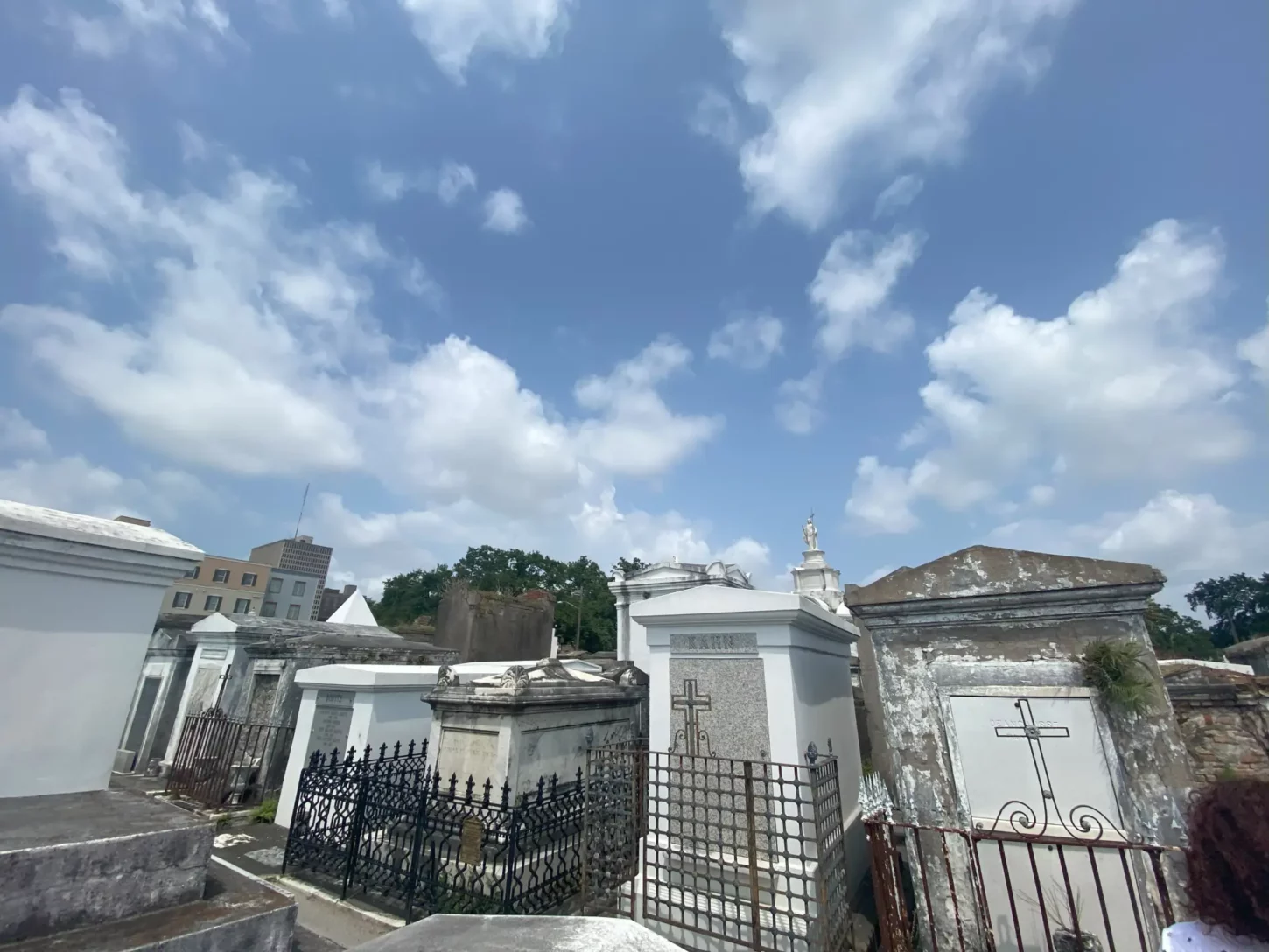
Above-ground tombs became the default solution, drawing on French and Spanish burial traditions to create the eclectic mix of tombs that New Orleans is now so well known for.
Today, around 90% of burials in New Orleans are now above ground, with tombs stacked, walled, and layered across multiple historic sites. It’s not hard to see how the city earned its nickname: ‘The City of the Dead‘.
St. Louis Cemetery No. 1 and Its Flooding History
St. Louis Cemetery No. 1 hasn’t always had the easiest time staying dry.
In 1816, a breach in the levee — the raised earth embankments used to hold back the river — at McCarty’s Plantation sent floodwater straight into the city.
Many newspapers that summer — including The Morning Post and The Leicester Chronicle — picked up the story, describing how the breach hit an already parched landscape after several weeks of extreme heat and dryness.
Widespread flooding followed, with the ground too baked to absorb much of anything –You can find more in papers held in the British Newspaper Archive online. (£)
Then came the 1849 flood, known as Sauvé’s Crevasse, which caused even greater damage when another levee failed on the Mississippi River, about seventeen miles up from New Orleans.
The water swept through large parts of the city — the devastation is well documented on more dedicated sites like 64parishes.org. While it’s hard to say exactly how badly the cemetery was affected, the area certainly didn’t come through unscathed.
According to O’Brien, who researched the event for 64 Parishes, most cemeteries were under six feet of water within days of the breach, and as the floodwaters finally began to recede, snakes and even crocodiles were reportedly left roaming the streets.
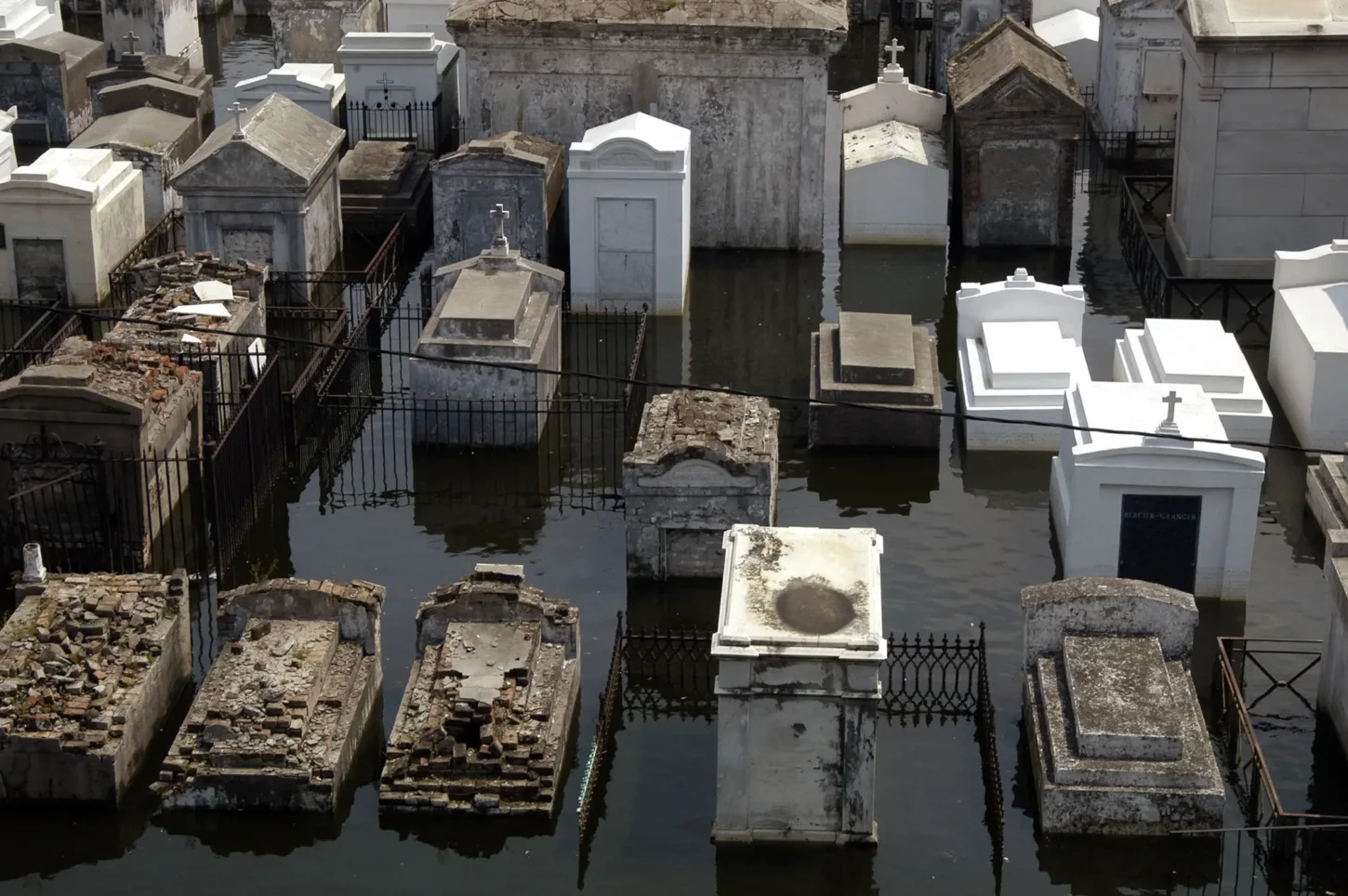
More recently, Hurricane Katrina in 2005 also impacted St. Louis Cemetery No. 1. and like many of the city’s historic sites, it faced both flood damage and a long recovery.
There’s an indepth post by the Natural Hazards Center on cemetery preservation and disaster planning, which looks at the damage caused by Hurricane Katrina – along with the impact of flooding on other cemeteries across the U.S. if you’re interested in reading further.
Who’s Buried in St. Louis Cemetery No. 1?
From renowned historical figures to cultural icons, St. Louis Cemetery No. 1 is the final resting place of some of the city’s most fascinating and influential individuals.
You can’t think of St. Louis Cemetery No. 1 without thinking of its most famous ‘resident’, Marie Laveau — the so-called Voodoo Queen. Her tomb still attracts countless visitors who come to pay their respects and seek her guidance, in the hope that she’ll grant their wishes from beyond the grave.
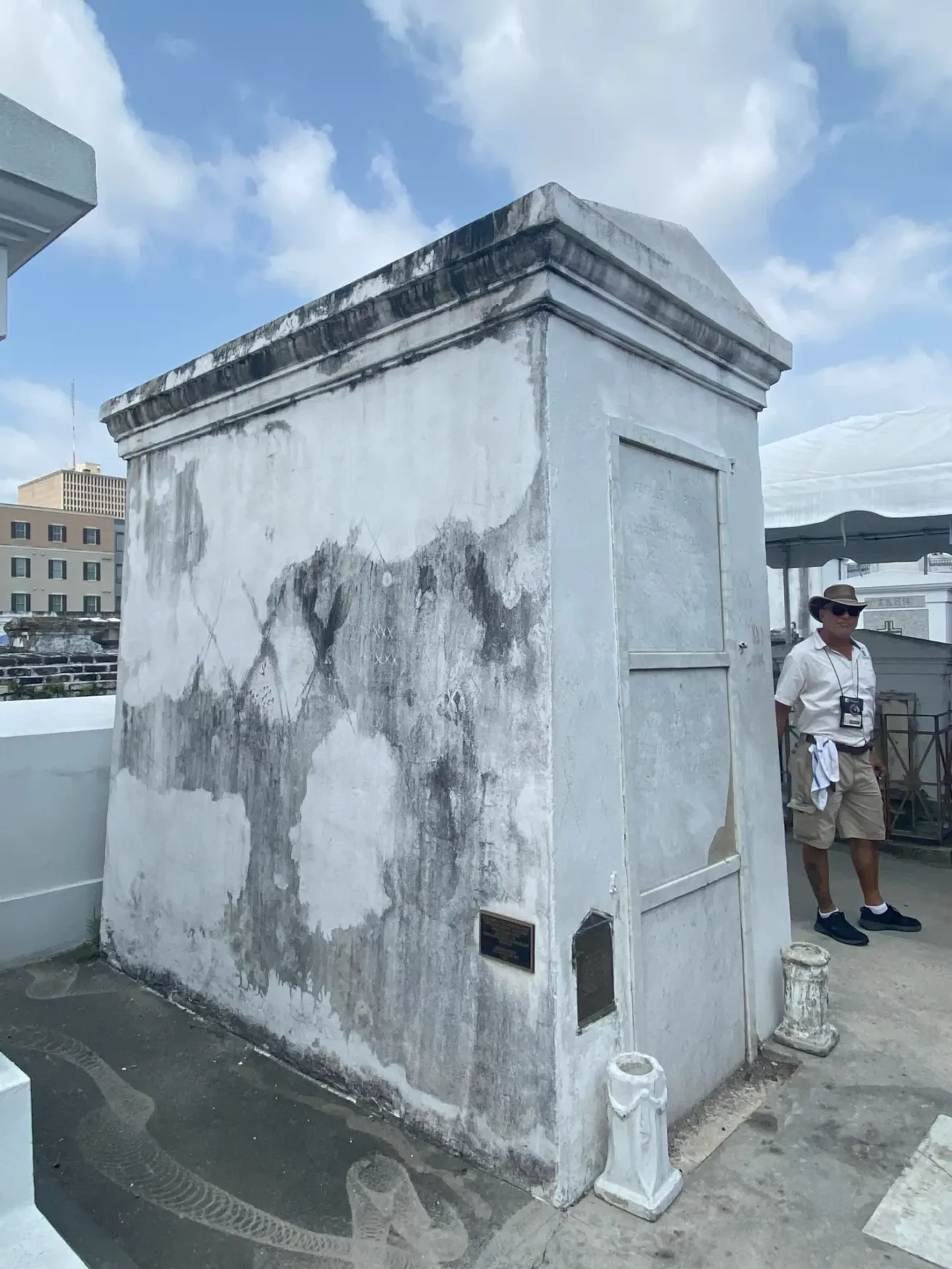
But Laveau has a tendency to outshine some of the other notable names buried here. It wasn’t until I actually walked around the site that I realised just how important this place is to the wider history of New Orleans.
Take Bernard de Marigny, a prominent New Orleans politician and entrepreneur who helped shape the city — he’s buried here. So is Paul Morphy, a chess prodigy who achieved international fame in the 19th century.
Even today, his tomb draws chess enthusiasts from around the world.
There are other standout tombs too. The Italian Mutual Benevolent Society tomb is a tribute to the Italian community in New Orleans, and then there’s the slightly infamous pyramid-shaped tomb pre-purchased by actor Nicholas Cage — which is impossible to miss.
Walk around today and you’ll notice the site is a real mix of family tombs (the most common), wall vaults (a personal favourite), and society tombs — some with fascinating stories to tell.

Famous Graves In St. Louis New Orleans
I knew when I visited St. Louis, New Orleans that I’d be seeing famous tombs such as Marie Laveau’s tomb and Cage’s pyramid, but honestly, without a guide showing you around, I’d have missed so many key things that I think the visit would have felt a little flat.
This was my first American cemetery and it was so different to the graveyards in the UK such as Greyfriars Kirkyard in Edinburgh say, that I didn’t really appreciate what I was looking at until our guide share the history.
Perhaps if America is your homeland, some of the history would have been more familar to you but what I learnt duing the tour was fascinating. These are just a few of the tombs at St. Louis Cemetery that were pointed out to us during our tour – make sure you listen up when the guide’s explaining the history, they’ll be able to do a much better job than I have here.
But let’s go, first up is the most notable tomb in the whole cemetery, that of Marie Laveau.
Marie Laveau – The Voodoo Queen
Marie Laveau is the best-known name in St. Louis Cemetery No. 1 — and with good reason. Born in 1801, she became known as the Voodoo Queen of New Orleans: a spiritual leader, healer, and prominent community figure whose influence stretched well beyond her lifetime.
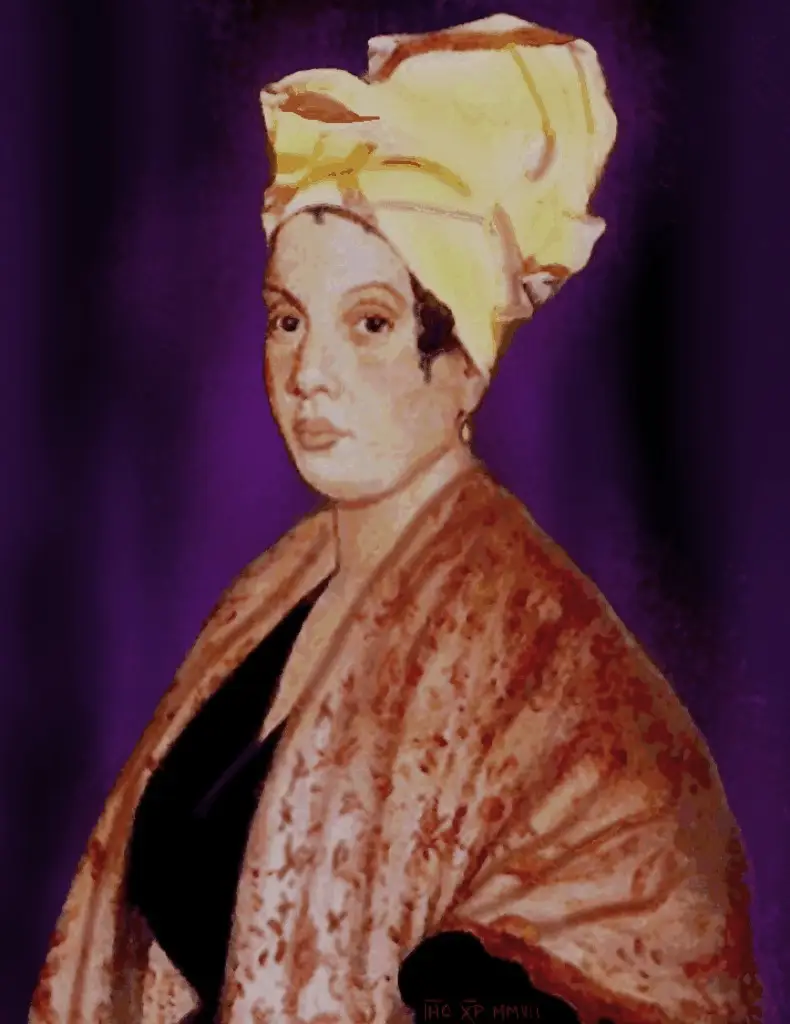
Her tomb remains one of the most visited in the cemetery. For decades, visitors marked it with triple X’s, hoping to summon her favour — a habit that caused so much surface damage the tomb had to be fully restored in 2014.
Today, you’ll still see offerings left by the curious and the devout alike: candles, coins, and the occasional note tucked between the bricks. As for the graffiti, it’s no longer tolerated, and hefty fines are issued to those who try.
Laveau’s legacy goes far beyond folklore.
She was known for nursing the sick, offering aid to prisoners, and navigating 19th-century New Orleans as a free woman of colour — all while practising and preserving African spiritual traditions.
Her life has inspired songs (Bobby Bare and Dr. John among them), books, and plenty of writing, all of which adds to the lasting interest in her story.
If you’re visiting the cemetery, it’s almost certain your guide will stop at her tomb — and whether or not you believe the stories, it’s a key part of the cemetery’s history worth hearing more about.
The Magie of Marie Laveau | Denise Alvarado
One book that often comes up when talking about Laveau is The Magic of Marie Laveau by Denise Alvarado. I haven’t read it myself, but if you’re interested in delving into the life and legacy of Marie Laveau and exploring her spiritual influence and how she’s remembered today, it might be worth a look.
Can You Still Visit Marie Laveau’s Tomb?
Yes, you can still visit Laveau’s tomb — but you’ll need to go with a licensed guide. Access to St. Louis Cemetery No. 1 is strictly limited to official tours, and Marie Laveau’s tomb is always on the route.
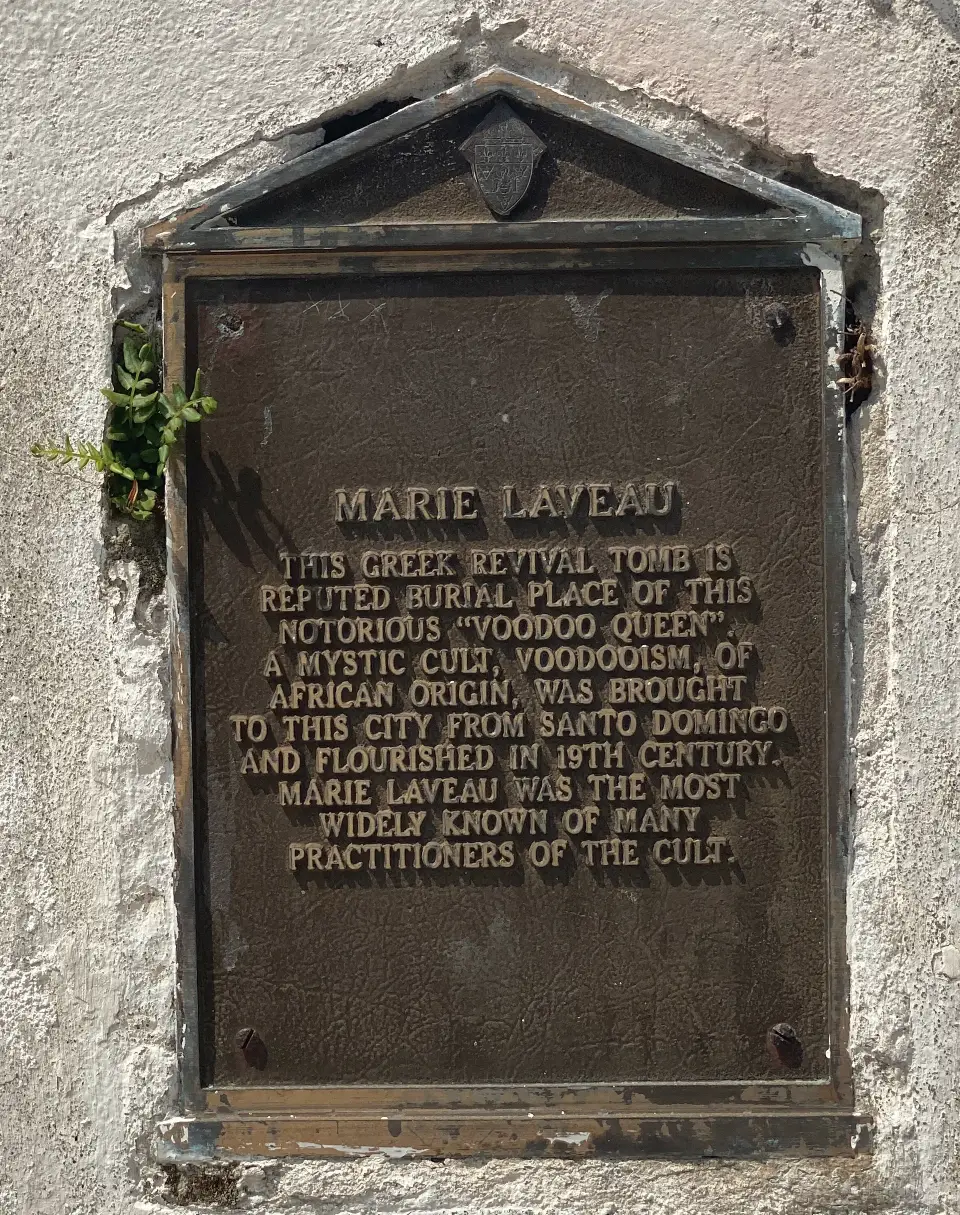
If it’s on your list to visit St. Louis cemetery then it’s worth booking ahead, especially in cooler months when spots fill fast.
Whether or not you believe the stories, it’s a key part of the cemetery’s history and well worth hearing about.
Bernard de Marigny – The Gambler with a Legacy
Bernard de Marigny, born in 1785 into New Orleans’ wealthiest family, was known as a gambler and a rowdy man. Does that make him a rowdy gambler…?
Rumour has it that he lost the family fortune through his gambling habits. But Marigny’s legacy extends beyond his notorious reputation.
He helped shape New Orleans in tangible ways — most notably by developing the Faubourg Marigny district just downriver from the French Quarter. The neighbourhood still bears his name today.
While in England as a teenager, he picked up the dice game “Hazard,” which he brought back to Louisiana. He and his friends would crouch down to play it in the street — earning it the nickname “Craps,” from the French crapaud (frog).
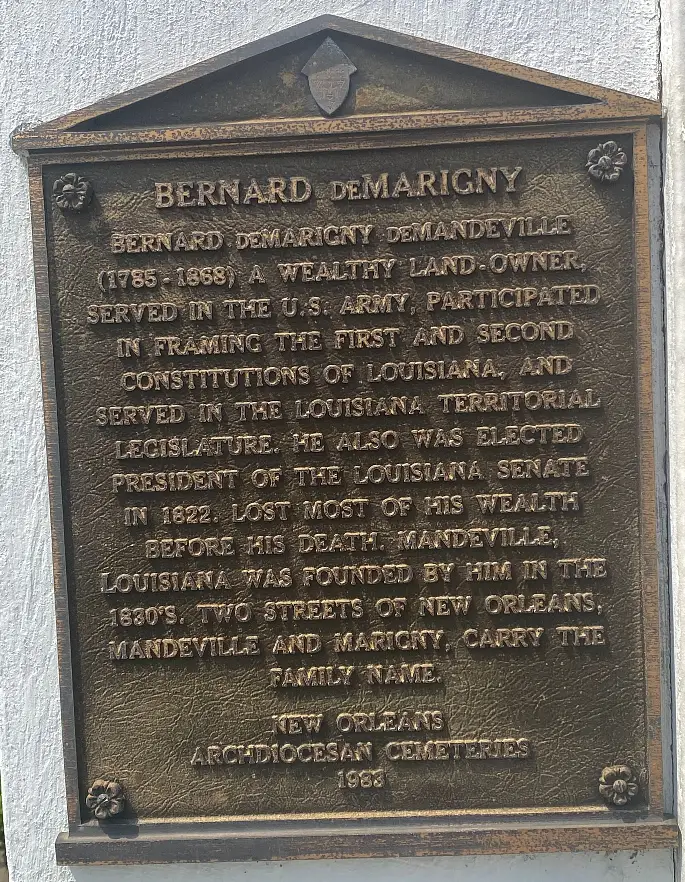
Despite his wild reputation, Marigny also made positive contributions to New Orleans. In 1812, he drafted the first state constitution, showcasing his involvement in shaping the governance of the city.
His tomb isn’t the grandest in the cemetery, but it’s a good reminder that New Orleans history isn’t all haunted legends — sometimes, it’s a dice-throwing aristocrat with a street named after him.
Paul Morphy – Chess Prodigy Turned Tragedy
Paul Morphy was born in New Orleans in 1837 and became one of the most famous chess players of the 19th century — widely considered a prodigy. By the age of nine, he was already beating experienced adult players, and by twelve, he’d defeated a visiting European master.
Rising to fame after an 1858 tour of Europe, his career was short-lived. Morphy retired from competitive chess by his early twenties, and his later life was marked by isolation and declining mental health.
Stories from the time describe increasingly erratic behaviour. He died in 1884 at the age of 47 after reportedly suffering a stroke while in the bath.
His tomb at St. Louis Cemetery No. 1 is modest, but still attracts visitors — particularly chess enthusiasts, who continue to view him as one of the game’s earliest legends.
Italian Mutual Benevolent Society Tomb
The Italian Mutual Benevolent Society Tomb is one of the grandest in St. Louis Cemetery No. 1 — a white, multi-vaulted structure commissioned in 1857 as a shared tomb for members of the Italian Mutual Benevolent Society. Some say it resembles a very elaborate chest of drawers.
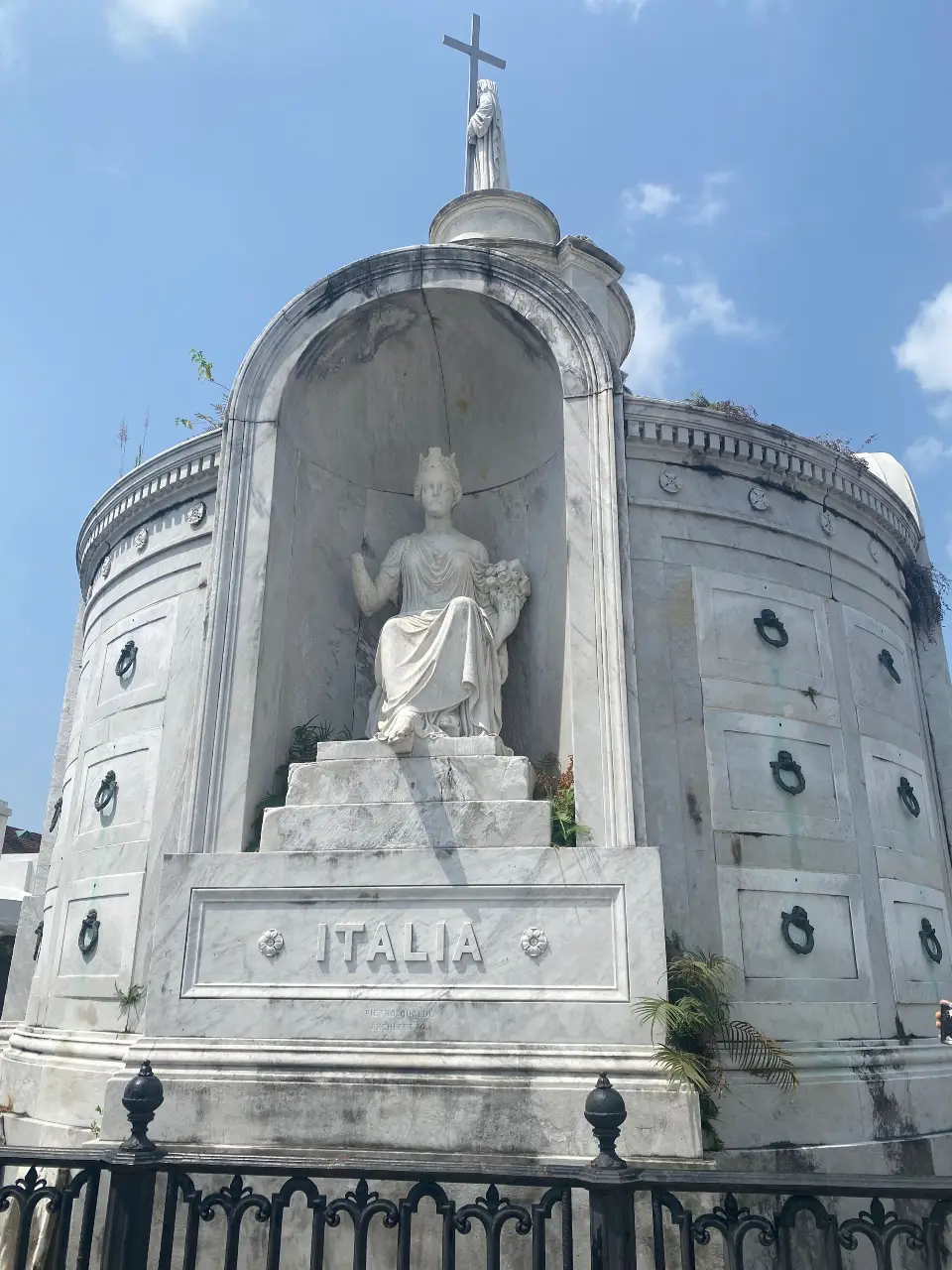
Designed by Pietro Gualdi and imported from Italy, the tomb originally cost around $40,000 — a significant investment at the time, and a source of pride for the city’s Italian immigrant community.
It also has a touch of pop culture notoriety. In 1969, the tomb featured in a scene from Easy Rider, filmed without permission.
The aftermath — including Peter Fonda climbing on top of the structure — eventually led to much stricter access rules across the cemetery, closing it to the public in 2015.
Take a look at the scene yourself in the clip below.
Nicholas Cage’s Pyramid Tomb
Yes, actor Nicholas Cage really does have a tomb waiting for him in St. Louis Cemetery No. 1 — and no, you can’t miss it. The stark white pyramid stands nearly nine feet tall and feels completely at odds with the older tombs surrounding it.
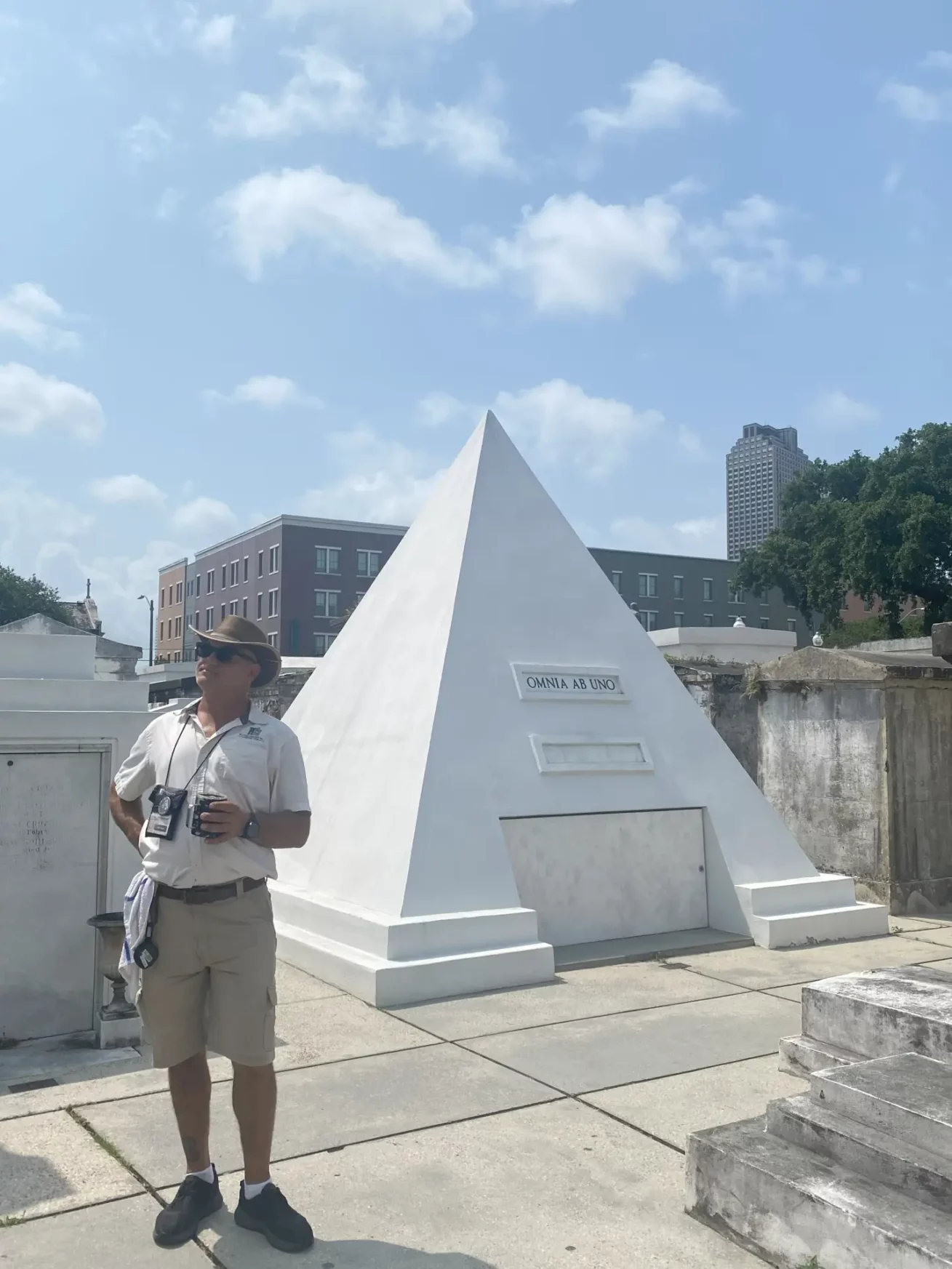
Cage reportedly bought the plot in 2010, not long after facing a string of financial issues that included losing several New Orleans properties — including the famous LaLaurie Mansion.
He never publicly explained his decision to be buried here, but the tomb is already a site of interest — visitors often stop to take photos or leave offerings, including lipstick marks, despite repeated clean-ups.

Omnia Ab Uno
Nicholas Cage’s tomb is inscribed with the Latin phrase Omnia Ab Uno — meaning ‘Everything From One’. It’s an obscure motto with possible roots in alchemical or philosophical thought, though he’s never publicly explained it.
The tomb is said to have cost around $40,000, adding yet another layer to the mystery
Out of place? Maybe. But in a cemetery that’s already home to voodoo queens, gamblers, and chess prodigies, is a nine foot white pyramind going to raise that many eyebrows?
Delphine LaLaurie – Fact or Folklore?
Delphine LaLaurie, also known as Madame Blanque, was a New Orleans socialite infamous for her sinister actions in the 19th century.
Her name is forever linked to the horrors uncovered at her Royal Street mansion, where enslaved people were subjected to unimaginable cruelty, and murder, between 1831 and 1834.
Some believe she is buried in St. Louis Cemetery No. 1, although her exact burial location remains uncertain.
No official records confirm her final resting place, but the rumour alone is enough to keep her tied to the cemetery’s legend.
Visiting St. Louis Cemetery No. 1
I booked the 45-minute guided tour offered by Cemetery Tours New Orleans and I was delighted with the whole experience. Our guide was fabulous and how he kept up the pace in the blistering heat I’ll never know!
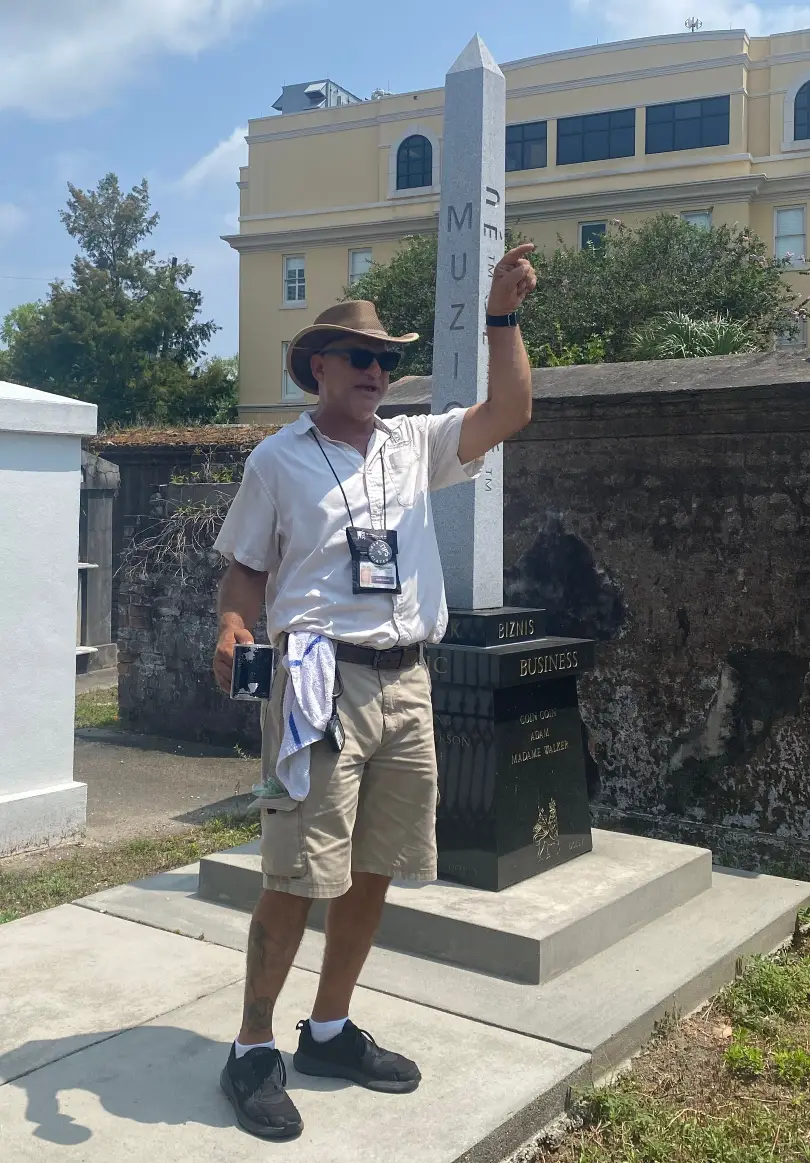
The tour begins at the Basin Street Station visitor centre, just outside the cemetery gates.
You’ll be asked to sign a waiver, and there are shaded areas and misting fans if you’re brave enough to go in summer.
Spaces are limited for each tour group. I recommend booking your tour online prior to visiting to avoid disappointment.
Book Recommendations
Whether you’re interested in the general history of the cemetery or want to delve deeper into the life of the famous Voodoo Queen Marie Laveau, these book recommendations will definitely satisfy your curiosity.
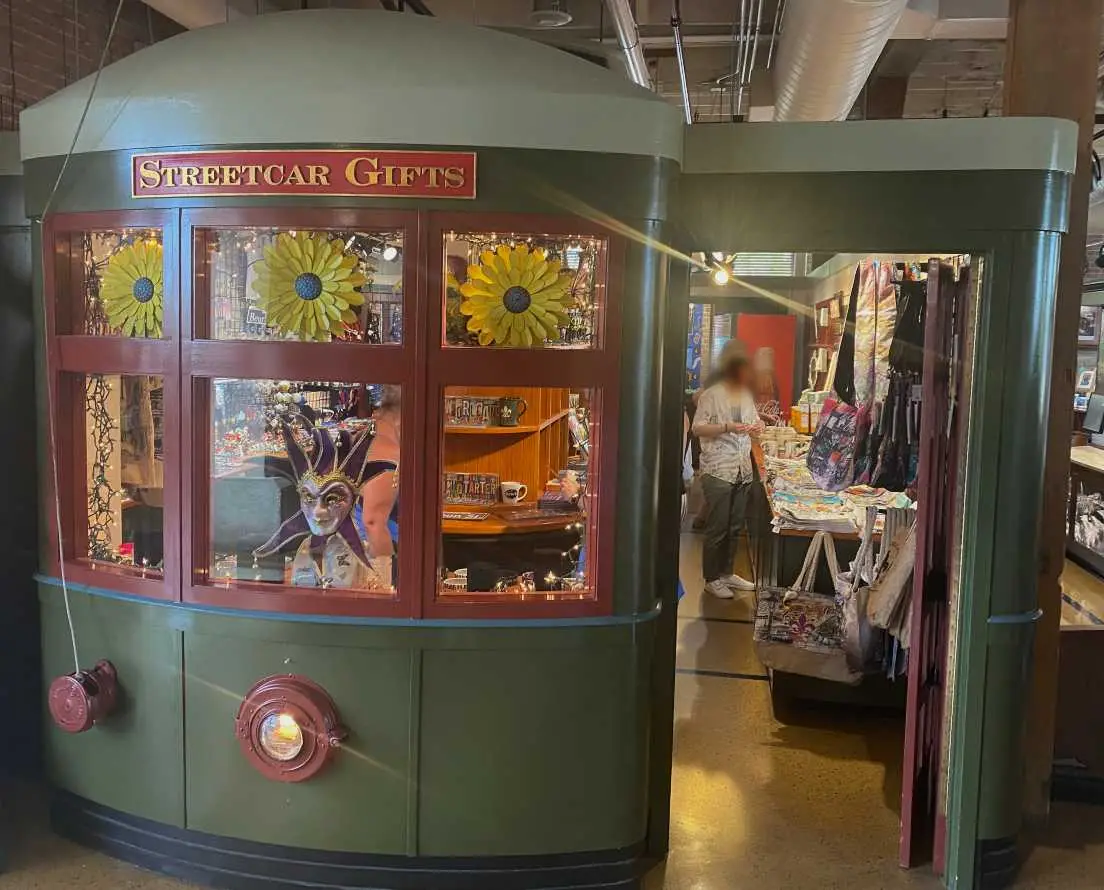
One highly recommended book is Cities of the Dead: Historic New Orleans Cemeteries by Carl Robinson. I’ve not read it but it seems a popular choice. This comprehensive guide, although a little small size-wise, offers a fascinating exploration of the city’s cemeteries, including St. Louis Cemetery No. 1.
For those seeking a book about Marie Laveau herself — in addition to the one mentioned above – Voodoo Queen: The Spirited Lives of Marie Laveau by Martha Ward seems to receive mixed reviews. I’m put off by the cover, if I’m honest, but if I got swept away in the moment, I’d probably consider a purchase ‘just because’.
If you’d rather treat yourself on your visit though, the gift shop here has you covered.
Just maybe set yourself a budget first.

